China seizes space
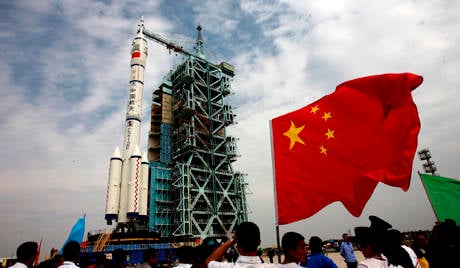
The People’s Republic of China gradually and fairly successfully implements its ambitious space plans and rushes into space with frightening speed.
The launch of the Chinese space program was given in 1956 year. The first goal of the program was to bring a satellite into Earth orbit, the Chinese planned to mark this event to coincide with the 10 anniversary of the founding of the People's Republic of China. At the same time, the development of ballistic missiles capable of giving a fitting rebuff to the cunning capitalist west was laid down for the purposes of the program. By the decade, the Chinese failed to launch the satellite, but the launch of the first Chinese ballistic missile DF-1 was successful, it took place in 1960 year. The DF-1 rocket was almost an exact replica of the Soviet P-2 rocket.
At first, all Chinese space-related developments were exclusively military, but since 1968, China has come to grips with the conquest of peaceful space. The Space Medicine and Engineering Research Institute was created and the active selection of the Chinese analogue of the Taikonaut cosmonauts began.
Already in 1970, the Dong Fang Hun 1, which was the first Chinese satellite, appeared in orbit. Over the next few years, the PRC was able to launch several more satellites, but compared with the space achievements of the United States and the USSR, the success of the Celestial Empire looked pale. Already at that time, the Chinese were considering plans for manned space flights, but until the middle of the 90 of the last century, the implementation of such flights seemed a rather dubious enterprise.
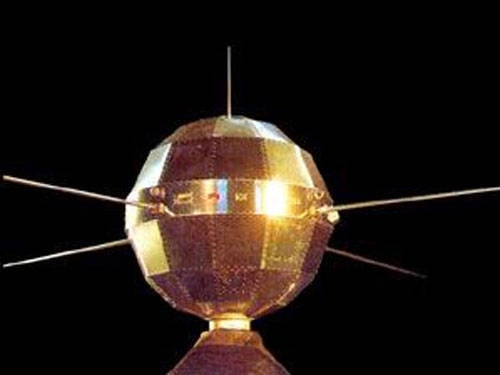
In 1994, Russia sold the PRC some of its rather old, developed in the middle of the 20 of the 20th century, space technologies used to produce the most reliable spacecraft - the famous "Unions". Five years later, in 1999, the Chinese launched their first spacecraft, named "Shengzhou-1" ("Heavenly Rook"), coinciding, of course, this momentous event to the next anniversary, the 50 anniversary of the PRC. In space, "Heavenly boat", still without people, stayed 21 hour. In 2001, a dog went to space on board the "Shengzhou-1", followed by a monkey, a rabbit, mice, cells and tissue samples, and almost hundreds of animals and plants, as well as microorganisms.
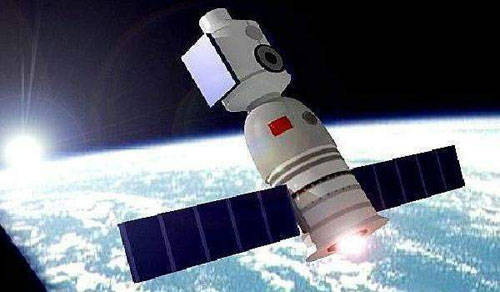
The next two flights went mannequins of people in full size. And, finally, in 2003, the first Chinese secretly led Yang Liwei set off on board the ship "Shengzhou-5". Heavenly Rook number five was in orbit 21 for one hour 22 minutes, making 14 orbits around the earth.
Although the incomplete days of the first Tycoonavt’s stay in space cannot be compared with the records of Soviet cosmonauts and US astronauts, nevertheless, China joined the elite club of countries capable of launching man into space.
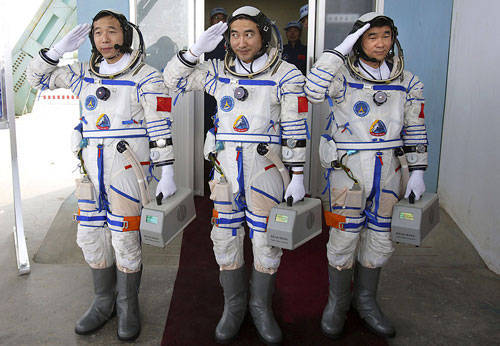
In 2005, the second manned flight took place, which lasted five days. In 2008, the Taekonauts flew a third time, this time for the first time in stories Chinese astronautics Taekonavt named Zhai Zhigang made a spacewalk. Overboard Zhigang was 25 minutes.
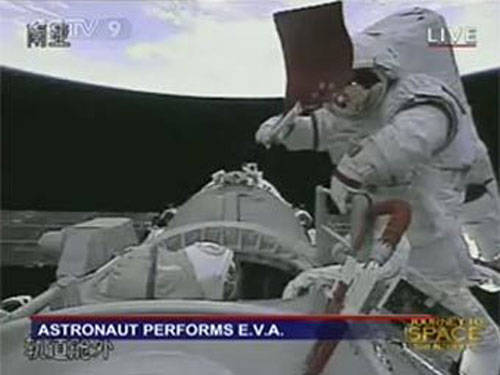
Manned flights are only a small part of the ambitious Chinese space program, whose plans include the creation of its own space station, sending a mission to the moon and exploration of Mars. At present, the Celestial Empire has already achieved quite noticeable results in all these areas.
Orbital station
The first module of the Chinese ISS went into orbit back in 1998, the station is scheduled to be completed in 2025. The People's Republic of China is not a member of the International Space Station program, but the Chinese do not seem to worry much about this, since the Celestial Empire intends to acquire its own orbital “Heavenly Palace”. It was originally planned to send into space the first laboratory module of the Tiangong-1 station ("Heavenly Palace") at the end of last year, but later the dispatch date was moved to the second half of the 2011 year.
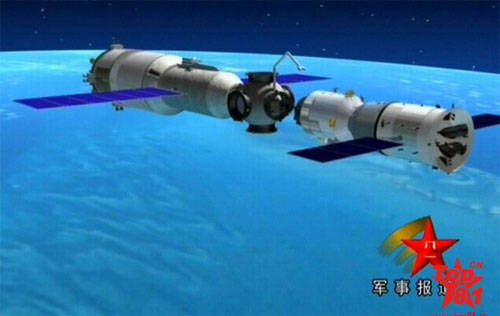
Further, according to the plan, the "Shengzhou-9" and "Shengzhou-10" should be docked with the palace, which will be delivered to the Tiangong-1 module of the Taekonavts. By 2020, the internal space of the station should be expanded with two more modules, the main and another laboratory. It is planned that the Chinese analogue of the ISS will work in orbit for at least ten years.
Moon program
With the launch of the Chang'e-2007 satellite on the moon in 1, the Chinese lunar program was launched to the moon. Chang'e-1 spent months in orbit on Earth satellite 16, completing its mission in early March of 2009, it crashed into the surface of the moon.
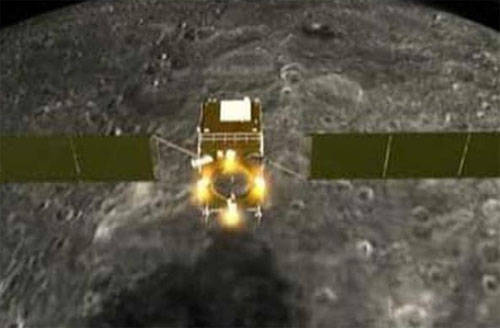
The second lunar probe "Chang'-2" was launched on the first of October 2010 of the year. “Chang'e-2”, turning in an orbit one hundred kilometers above the surface of the moon, studies the surface and looks for a place to land on the Chinese lunar probe “Chang'e-3”.
The launch of “Chang'e-3” is scheduled for 2013 year. The device will deliver a six-wheeled lunar rover to the moon. Radioactive isotopes will be used as the energy source for the lunar rover.
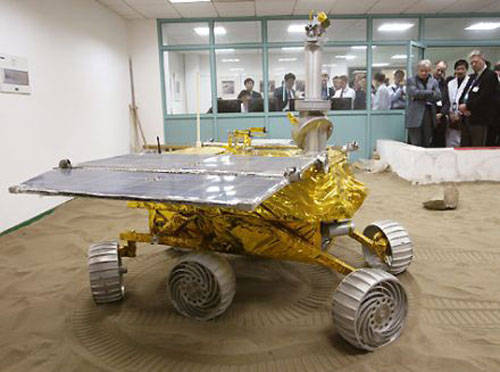
Following the moon rovers in 2017, the Taikonauts will go to the moon, who have already begun training.
Mastering Mars
In November, the 2013 of the year to the orbit of Mars, the Chinese plan to launch a research probe. Structurally, it will be similar to lunar probes, and representatives of the Chinese astronautics emphasize the fact that all scientific instruments will be made in the Middle Kingdom. If Chinese engineers do not have time to complete all the works by the end of 2013, then the next favorable time to start, when the orbits of the Earth and Mars are as close as possible, will be introduced in 2016.
The launch of the Inho-1 Martian probe is scheduled for November 2011. The space booster will be brought into space by the Russian carrier rocket - the Phobos-Grunt interplanetary station will be the Inho-1 partner. To implement these ambitious plans of the PRC, space platforms are needed. At the moment, China already has three spaceports, and by the year 2013 it is planned to build another one. The construction of the new cosmodrome began in the 2009 year, it will be located on the Hainan Island, the place was chosen successfully, the cosmodrome at such low latitudes will allow China to reduce costs when launching vehicles beyond Earth.
Of course, China is not the only country that seeks to become one of the leaders in the conquest of space. Russia and the United States are recognized leaders in this business, also regularly send ships and research vehicles. Europe tries to keep up. India is also making headway, the lunar probe of this country has become one of the devices that discovered water on the moon. Space ambitions are other developing countries. In addition, the Chinese borrow many space technologies from Russia, for example, the Taykonavtov spacesuits are modified versions of our Falcons, and their Heavenly Rook is largely copied from Soyuz.
Nevertheless, the rapid development of its space industry, China makes a serious bid for first place in the as yet officially undeclared space race.
Information